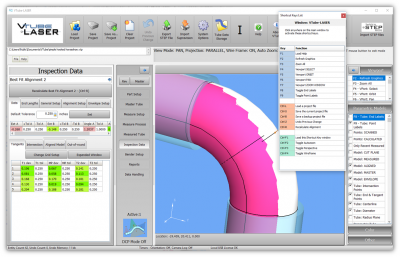Difference between revisions of "Compare UniScan to MultiScan Measurements"
From ATTWiki
(Created page with "<table> <tr cellpadding=10> <td width=225> 300px ==Measure and Clock Tube Legs== </td> <td width=300> image:vtube-laser_v2.7_screensh...") |
|||
| Line 5: | Line 5: | ||
| − | == | + | ==Compare UniScan and MultiScan Measurements== |
| Line 20: | Line 20: | ||
<tr valign=top> | <tr valign=top> | ||
<td width=300> | <td width=300> | ||
| − | + | UniScan measurements take one group of evening spaced points over the entire straight. The method use to measure with UniScan is like spray painting.<br><br> | |
| + | UniScan is the best way to get to a true centerline average - especially for deformed diameters in straights. The reason is because UniScan averages out the entire surface of the straight measured. | ||
</td> | </td> | ||
<td> | <td> | ||
| − | + | ||
</tr> | </tr> | ||
<tr valign=top> | <tr valign=top> | ||
<td width=300> | <td width=300> | ||
| − | + | MulitScan only measures near the tangents of a straight. (The tangents are the locations on the straights where the straights and bends meet.<br><br> | |
| − | </td> | + | MultiScan measurements are usually reserved for straights that are bowed - like in brake lines with long straights.<br><br> |
| + | For those kinds of tubes</td> | ||
<td> | <td> | ||
| − | + | ||
</tr> | </tr> | ||
Revision as of 14:08, 28 March 2018
|
Compare UniScan and MultiScan Measurements |
|
UniScan measurements take one group of evening spaced points over the entire straight. The method use to measure with UniScan is like spray painting. |
|
|
MulitScan only measures near the tangents of a straight. (The tangents are the locations on the straights where the straights and bends meet. |
|
|
|
|
Other Pages
- Back to VTube-LASER



